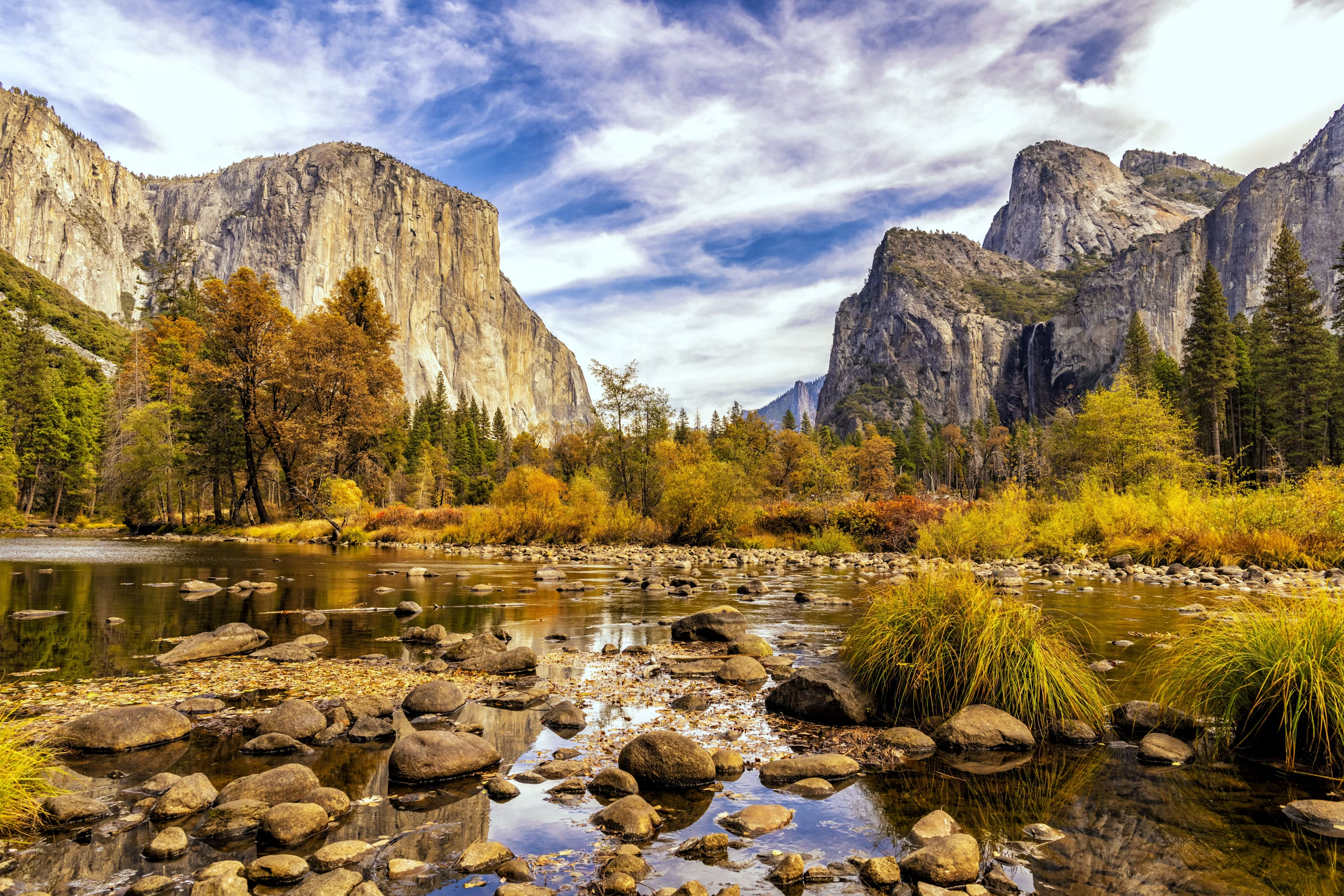Introduction
Yosemite National Park, renowned for its stunning natural beauty and iconic landmarks, is located in the western Sierra Nevada mountains of California. This UNESCO World Heritage site attracts millions of visitors each year with its majestic granite cliffs, ancient giant sequoias, and diverse ecosystems. If you’re curious about where exactly Yosemite National Park is situated and what makes it such a cherished destination, read on to discover more about this natural wonder.
**1. Geographical Location
State and Region
Yosemite National Park is situated in eastern California, in the central eastern portion of the state. It spans across the western slopes of the Sierra Nevada mountain range, approximately 200 miles east of San Francisco and about 300 miles northwest of Los Angeles.
Coordinates
The park’s geographical coordinates are approximately 37.8651° N latitude and 119.5383° W longitude. These coordinates place it within the heart of the Sierra Nevada mountains, contributing to its unique landscape and ecosystem.
**2. Proximity to Major Cities
Distance from San Francisco
Yosemite National Park is approximately 200 miles southeast of San Francisco. The most common route to the park from San Francisco is via Interstate 580 East and State Route 120 East.
Distance from Los Angeles
From Los Angeles, Yosemite National Park is about 300 miles to the north. Visitors typically travel via Interstate 5 North and State Route 99 North before connecting to State Route 41 North, which leads directly to the park’s southern entrance.
**3. Surrounding Areas and Counties
Adjacent Counties
Yosemite National Park spans across parts of Mariposa County, Tuolumne County, and Madera County in California. These counties encompass the park’s diverse landscape, from towering granite cliffs to lush meadows and ancient forests.
Nearby Cities and Towns
Nearby communities include Mariposa, Groveland, and Lee Vining, which provide convenient access points and lodging options for visitors exploring the park.
**4. Natural Features and Landmarks
Yosemite Valley
One of the most iconic features of Yosemite National Park is Yosemite Valley, a glacially carved canyon with towering granite cliffs such as El Capitan and Half Dome. The Merced River flows through the valley, offering stunning views and recreational opportunities.
Giant Sequoias
The park is also home to several groves of giant sequoias, including the Mariposa Grove and Tuolumne Grove, where visitors can marvel at some of the largest and oldest living trees on Earth.
**5. Ecosystem Diversity
Biomes and Habitats
Yosemite National Park encompasses a wide range of ecosystems, from alpine meadows and subalpine forests at higher elevations to oak woodlands and chaparral in lower elevations. This diversity supports a variety of wildlife, including black bears, mule deer, and diverse bird species.
**6. Historical and Cultural Significance
Native American Heritage
The Yosemite Valley has been inhabited by Native American tribes, including the Ahwahneechee people, for thousands of years. Their cultural and historical significance is honored within the park.
Conservation and Preservation
Yosemite National Park has a rich history of conservation efforts, dating back to its establishment as a national park in 1890. Efforts continue today to protect its natural resources and maintain its ecological integrity.
**7. Visitor Information
Entrances and Access Points
There are several ways to get into Yosemite National Park. The Arch Rock Entrance is on State Route 140, the Big Oak Flat Entrance is on State Route 120, and the South Entrance is on State Route 41. Different parts of the park can be reached from each entry.
Facilities and Amenities
Within the park, visitors can find visitor centers, campgrounds, lodges, and dining options to accommodate various preferences and budgets.
Conclusion
Yosemite National Park’s breathtaking landscapes, rich biodiversity, and cultural heritage make it a cherished destination for nature lovers and outdoor enthusiasts alike. Its geographical location in the Sierra Nevada mountains of California ensures a diverse and captivating experience for visitors from around the world.
FAQs
Q1. When is the best time to go to Yosemite National Park?
Spring (April–June) and fall (September–October) are the best times to go because the weather is nice and there aren't as many people there.
Q2. Does Yosemite National Park cost money to get into?
Yes, there is an entrance fee for each person or car. This helps pay for upkeep and conservation work in the park. Fees change based on the time of year and the type of car.
Q3. What kind of lodging is there in Yosemite National Park?
Yes, the park does have a variety of places to stay, such as campgrounds, hotels, and cabins. It is strongly suggested that you make reservations, especially during busy times.
Q4. When I go to Yosemite National Park, can I hike?
Yes, Yosemite has many climbing trails that are good for all skill levels, from easy strolls to difficult hikes like the Half Dome hike. Always check the road conditions and get ready for them.
Q5. Can people with disabilities get into Yosemite National Park?
Yes, the park tries to make its buildings and services easy for everyone to use. Trails, facilities, and services that are easy for people with disabilities to use are accessible.






